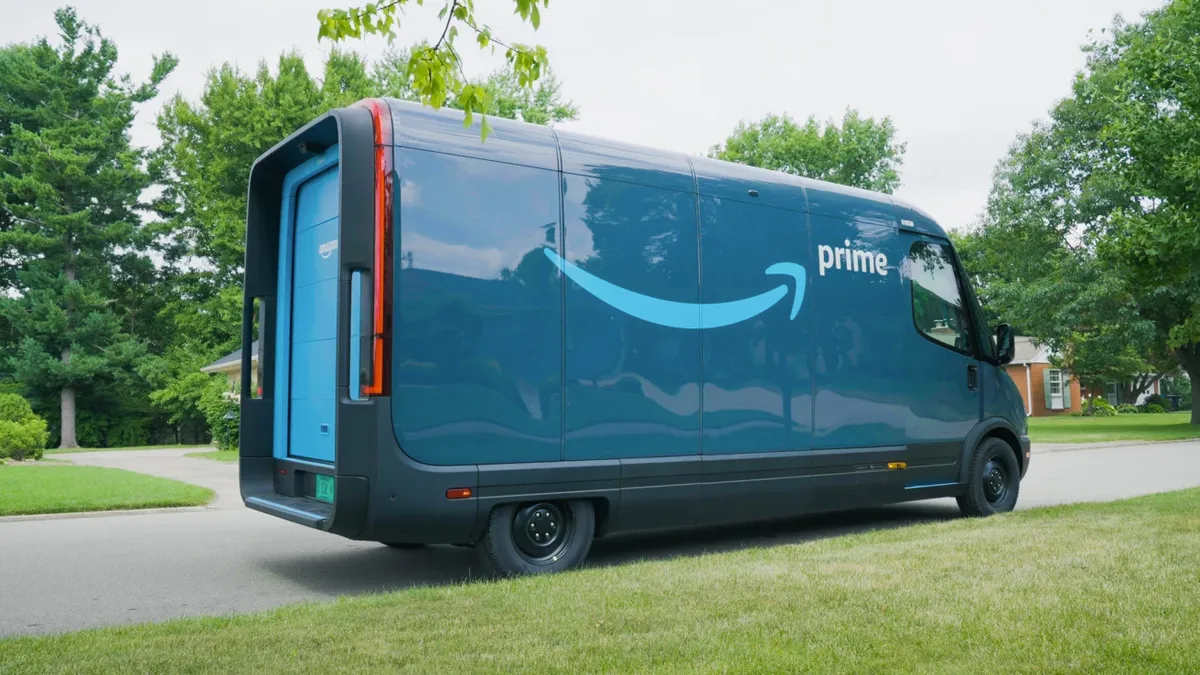Dive Brief:
-
Amazon on Thursday said its third quarter retail e-commerce sales rose 7% year over year to $53.5 billion, as physical store sales rose 10% to $4.7 billion. Revenue from services grew more, with marketplace seller services up 18 % to $28.7 billion, advertising up 25% to $9.5 billion and subscriptions up 9% to $8.9 billion.
-
Overall profits were squeezed in the quarter, as operating income contracted 48% to $2.5 billion and net income contracted 9% to $2.9 billion, with the North America segment swinging to a $412 million loss from last year’s $880 million income.
-
In a conference call Thursday, the e-commerce giant said that sales growth moderated as Q3 progressed, and warned that profits could vanish in the fourth quarter, estimating operating income for the period of between $0 and $4 billion.
Dive Insight:
In a rare turnabout, Amazon’s AWS cloud services unit underperformed its retail operations. Sales in that segment rose 27% year-over-year to $20.5 billion, and operating income fell 9.6% to $5.4 billion.
In retail, the company joins rivals in facing embattled consumers prepping for the holidays as they grapple with rising prices on essentials. Still, Amazon likely took share in the third quarter, analysts said.
That’s partly thanks to its increasing reliance on revenue streams outside of its sales of goods, including advertising, though Wells Fargo analysts noted that its Prime membership base may be nearing its saturation point in its established markets.
The company’s Prime Day sale contributed about 400 basis points to its Q3 year-over-year sales growth, Amazon CFO Brian Olsavsky told analysts Thursday. Its October reprise, by contrast, was disappointing, according to some researchers.
Olsavsky emphasized the negative effects of foreign exchange rates on the company’s results in the quarter. But that’s not the whole story, according to GlobalData Managing Director Neil Saunders. Rather, the “realities of a much tougher market where demand is more muted and the costs of doing business remain elevated is taking its toll on the business,” both in North America and abroad, he said in emailed comments.
This “underlines how much Amazon’s expensive operating model in retail is not yet optimized for a slower growth environment,” he said. “To be fair, Amazon seems to recognize this which is why we believe there has been a change of culture.”
Indeed, it may finally be “day two” at Amazon. Saunders sees it as a necessary pivot in a changing environment that has made it harder to stoke sales and profits.
“The company has moved away from being boldly experimental and is now far more cautious and forensic about its investments and bets,” Saunders said, noting Amazon’s decision to shutter much of its non-grocery brick-and-mortar fleet. “As times have shifted, Amazon is having to cut its corporate cloth differently. The challenge is to ensure that the general culture of unique thinking to stay one step ahead of the customer is maintained – which is more difficult to accomplish when investments are under more scrutiny.”













